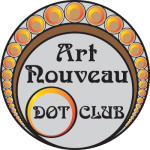Exploring Art Nouveau in Brussels: Unveiling Belgium’s Colonial Legacy
Despite the passage of time and the loss of many structures, Brussels remains the custodian of approximately 1,000 Art Nouveau buildings, with around 200 enjoying protected status as historical landmarks. Armed with these figures, city authorities are resolute in their mission to establish Brussels as the unrivaled global capital of Art Nouveau, discreetly challenging the likes of Barcelona and its revered architect Antonio Gaudí, a prominent figure in the Art Nouveau movement.
The rise of Art Nouveau in Belgium is inextricable from the concurrent exploitation of Congo, its people and its rich natural resources. “Exotic” wood, ivory and other materials, extracted by Congolese people under the brutal whip of colonial forces, are part of what defined the Art Nouveau style as it rose to prominence in Belgium. Indeed, in Belgium, another name for Art Nouveau was “Style Congo”.
At the same time, many of Brussels’ Art Nouveau architectural masterpieces were commissioned by those whose careers and fortunes were built on the profits of exploiting Congo.
Currenlty there is a movement and efforts to decolonize Belgium’s public spaces. The Civa hosts the exhibition “Style Congo – Heritage & Heresy,” showcasing the propagandist portrayal of Congo during international expositions. Collaborating with the decolonization task force, the exhibition sheds light on Art Nouveau’s connection to Belgium’s colonial past. Photographer Chrystel Mukeba captures portraits of Belgians with Congolese roots in iconic Art Nouveau buildings, facing challenges in securing permissions. The initiative aims to reappropriate heritage and encourage broader participation in the conversation.
How The Congo and The Brussels International Exposition helped Art Nouveau – Exclusive private tour
At the end o the 19th Century Congo was a Belgian Colony, and the main source of revenues for its King Leopold II. Imperial Belgian regime introduced Art Nouveau in Congo, but it was in Belgium’s capital Brussels where this art style had its major expression. The Congo natural resources represented a great source of currency for many Belgian burgeoise which built amazing mansions and flats to show their success to the rest of the society. The Brussels International Exposition held in Brussels in 1897 also helped Art Nouveau to develop in the Belgium capital. There were 27 participating countries, and an estimated attendance of 7.8 million people. The main venue of the fair was the Cinquantenaire Park and showcased Art Nouveau architecture and other arts works, as well as King Leopold II of Belgium’s personal property, the Congo Free State. Victor Horta built a small temple and succeeded in designing an almost “organic” interpretation of the classical temple, without completely abolishing any reference to an historical style.
